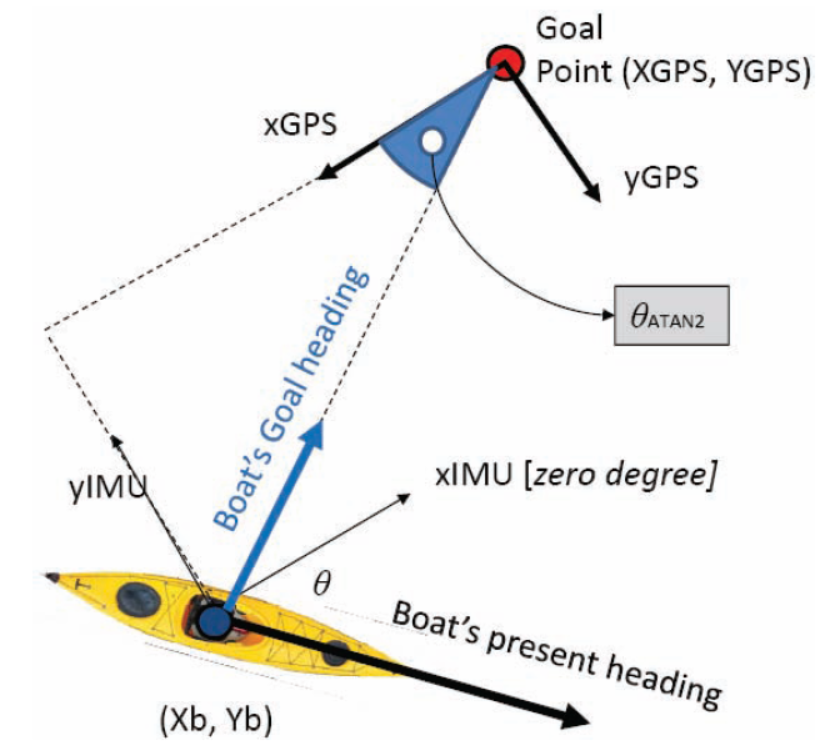Robot Boat for Environmental Data Collection
DOI:
https://doi.org/10.60136/bas.v1.2012.191Keywords:
Robot boat, Field mobile robot, Field data collection, Autonomous waypoints tracking, GPS navigationAbstract
This work focuses on the usage of robotics technology in the process of environmental data collection for the purpose of environmental protection, water resource management, and flood protection. The Department of Science Service (DSS) has designed and built a field mobile robot in the form of modified single seat “sit-inside” touring kayak driven by a pod propulsion system. The kayak's body can traverse a variety of water surfaces. The pod propulsion system is suitable for a kayak since the drive system is compact and it gives the kayak the agile movement. The use of rudder is replaced by the heading motor and trolling motor set which gives better maneuvering and stall-free motion. The robot boat can be controlled in two modes- Manual control and Autonomous waypoints tracking. In manual control mode users can control the robot remotely via 2.4 GHz radio system at the distance less than 1km. The Autonomous control is realized by the Double PD loop control algorithm which receives navigational data from a global positioning system (GPS) and an inertial measurement unit (IMU) and send command signal to the pod propulsor. The robot boat can be mounted with a variety of scientific instrument such as a multi-parameter head sensor, an echo sounder, and an automated water sampler system. The users can inquire real-time data from any sensors on the boat via wireless communication network such as WLAN, EDGE/GPRS, or 3G (subject to availability of the network). This research work was already put to work in real-world application in the event of the 2011 Thailand's great flooding. The robot boat equipped with a single beam echo sounding system was used to acquire depth data of the canals to identify the clogging points. The data was use in planning the drainage of flooded water in Bangkok Metropolitan area.
References
Natural hazards, unnatural disasters: The economics of effective prevention”, The World Bank and The United Nations. 2010.
J. E. Manley, “Unmanned Surface Vehicles, 15 Years of Development”, Proceedings of MTS/IEEE Oceans'08, 2008.
J. Curcio, J. Leonard, and A. Patrikalakis, “SCOUT-a Low Cost Autonomous Surface Platform for Research in Cooperative Autonomy.” IEEE OCEANS, 2005.
M. Dunbabin and Lino Marques, “Robotics for Environmental Monitoring: Significant Advancements and Applications”, IEEE Robotics and Automation Magazine, Vol. 19, No.1, 2012, pp.24-39.
M. Caccia, M. Bibuli, R. Bono, Ga. Bruzzone, Gi. Bruzzone, E. Spirandelli, “Unmanned Marine Vehicles at CNR-ISSIA”, Proceedings of the 17th World Congress, The International Federation of Automatic Control (IFAC), 2008.
M. Bibuli, G. Bruzzone, M. Caccia, G. Indiveri, A.A. Zizzari, “Line following guidance control: Application to the Charlie unmanned surface vehicle”, Proceedings of IEEE/RSJ International Conference on Intelligent Robots and Systems, 2008.
M. B. Greytak, “High Performance Path Following for Marine Vecicles Using Azimuthing Podded Propulsion.” M.S. Thesis, Massachusetts Institute of Technology, 2006.
P. Prempraneerach and P. Kulvanit, “Autonomous Robot Boat for Water Sampling and Environmental Data Acquisition Tasks”, IEEE International Conference on Test and Measurement, 2010.
Y. Koda and K. Koda, “Unmanned Boat Automatic Survey System and Unmanned Boat Automatic Survey Method”, United States Patent, US 2010/0131133 A1.

Downloads
Published
How to Cite
Issue
Section
License
Copyright (c) 2012 Bulletin of Applied Sciences

This work is licensed under a Creative Commons Attribution-NonCommercial-NoDerivatives 4.0 International License.









